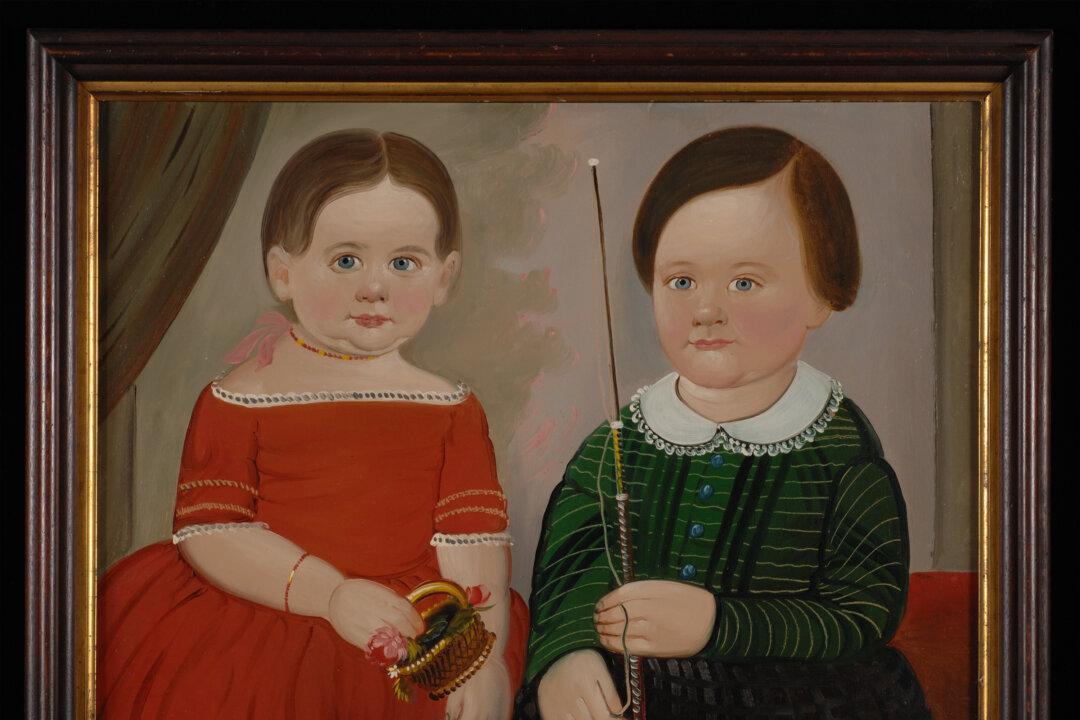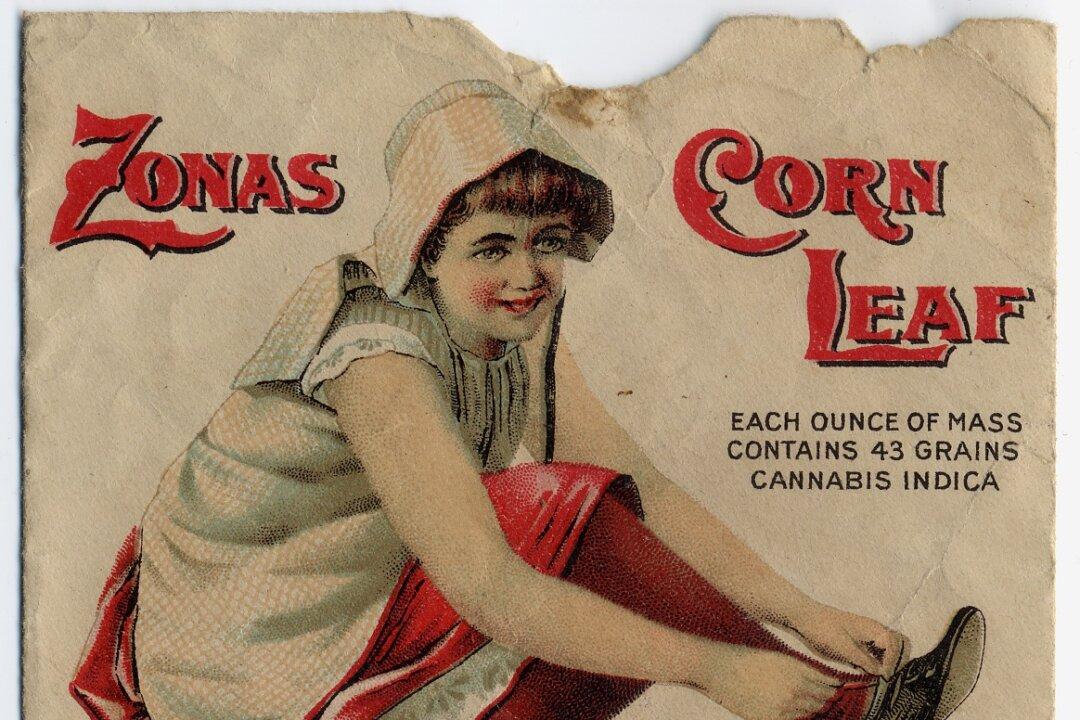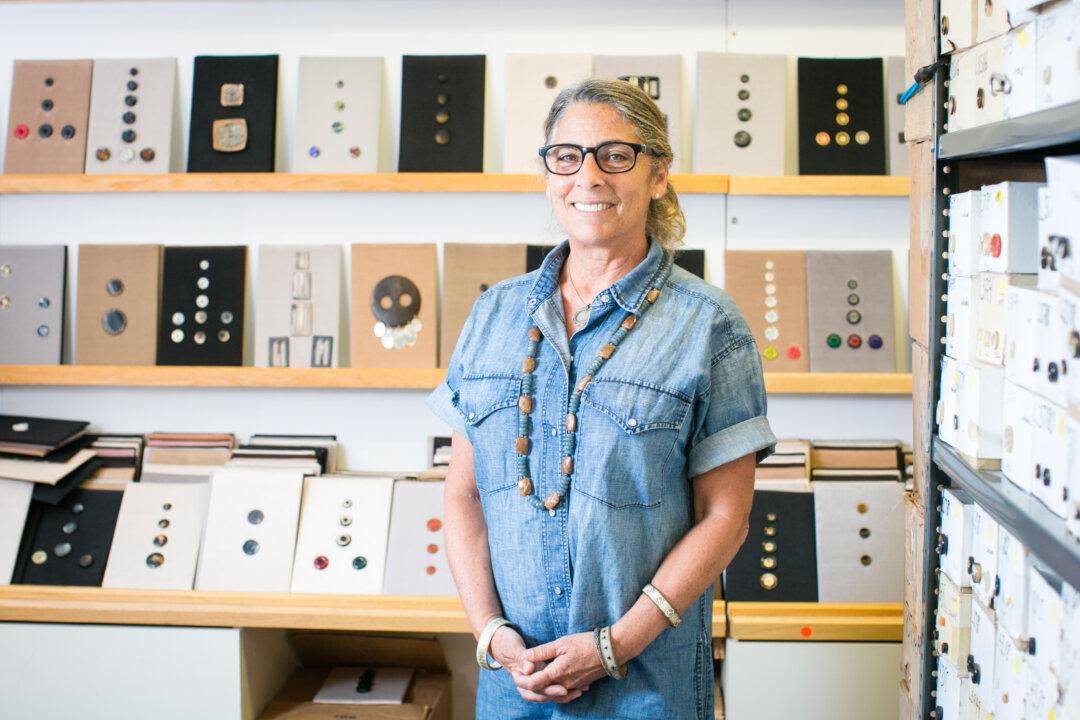NEW YORK—Were it not a self-portrait, William Matthew Prior would have charged $30 to depict the self-assured 19-year-old artist in a dandy suit, with a brush and a painter’s palette firmly in hand.
At the time, $30 was the charge for a top-of-the-line portrait. According to Prior’s personal sliding scale, this fee would most likely include some background scenery and curtains.
Prior was nothing if not clear and expedient. His business acumen was such that he is said to have democratized portrait painting in the 1800s.
The Artist and Visionary: William Matthew Prior Revealed exhibition, now showing at the American Folk Art Museum, offers a fascinating look at the life and work of the artist. The exhibition provides an unusual degree of transparency about Prior’s methods and beliefs, something that is not always easy to ascertain for artists in the genre.
“The work is reflective of the scope of his own interests and activities,” said exhibition’s curator Stacy Hollander. “One of the interesting things about this field is that the artwork is so tied to the human being producing it, so his activities and his beliefs had a great influence on the work that he did.”
A Reproducer of Paintings
Prior’s early portraits showcase a very polished academic style, which would have taken many hours to achieve.
According to Hollander, Prior started out with the ambition to become a fine artist like his American contemporaries who had opportunities to study in Europe. Unable to follow the same path, he then went for the best available alternative and apprenticed with painter Charles Codman. Through this, he was eventually granted entry into the studio of his idol—Gilbert Stuart.
“He admired Gilbert Stuart tremendously. There was overlap between artists working in Codman’s studio, and there is some evidence, through letters, that Prior was known in Gilbert Stuart’s studio and admired for his early work in portraiture,” said Hollander.
In fact, Prior admired Stuart so much that he sought and received permission from the painter to copy his original painting of George Washington in the Boston Athenaeum. Then, with typical Prior pragmatism, he used it to produce further reproductions, applying a variety of techniques, such as reverse painting on glass and oil on canvas.
Talent in Art and Business
Volume is something that Prior understood well, especially when it added up in cold hard cash. He is said to have completed 1,500 portraits in his lifetime; some, if not many, were painted in no longer than one hour.
In order to achieve speed, Prior developed a few styles. Among them was the “middle” style, which used large areas of flat color and concentrated on the face and hands of the sitters while leaving the rest in the style of naive art.
This is evident in his portraits of Nancy Lawson and her husband, William Lawson, now considered as two of the most important portraits of African-Americans of the genre and era. Though they are not painted in the academic style of which Prior was capable, the artist imbues the sitters with great candor and sympathy. The fact that he signed the work on the front of the canvas is also seen as a strong statement in support of the abolition of slavery.
Prior also advertised that he could paint portraits by “spirit effect”—after someone’s death. The exhibition showcases two dramatically different portraits of preacher William Miller—one lively and robust and the other highly stylized and symbolic.
Also exhibited are some of the most striking of Prior’s portraits of children, for which he developed yet another, more stylized method to depict bodies and clothes. These were his bargain-priced works, yet he captured the little sitters’ personalities in a powerful, unassuming, and direct way.
We may have an inkling that Prior earned a good living as a portrait painter, but the more interesting question is whether he felt fulfilled in his own artistic aspirations.
“He continued painting until he died, but this genre is about painting as many portraits as you can so that you can earn a living,” said Hollander. “Pragmatism is going to be part and parcel of it no matter what else is going on. This was not a field where you got wealthy. You were a fortunate artist if you were able to support yourself and your family in a comfortable manner.”
Money matters aside, Prior’s simple, paired-down style is likely to find currency with modern audiences.
Artist and Visionary: William Matthew Prior Revealed is at the American Folk Art Museum through May 26. Visit www.folkartmuseum.org for more information.





